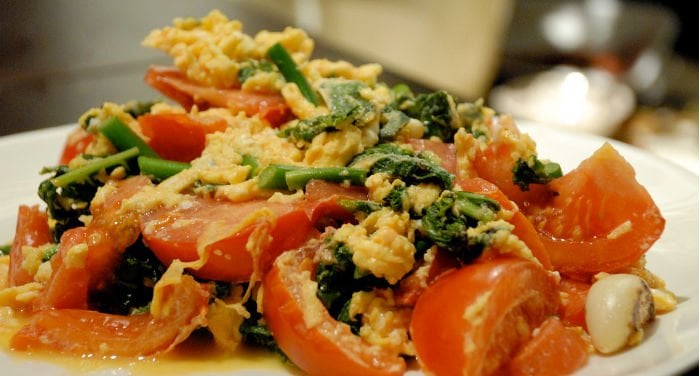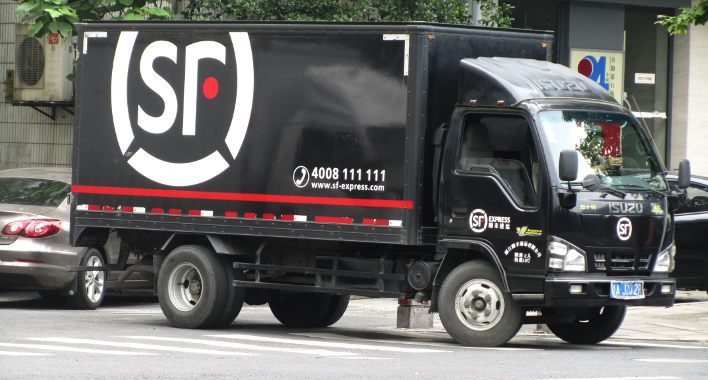
Guide to vegetarian food in China – Index
We’ve received and publish this article written by Ardita Osmani, a vegetarian who “survived” China
If you thought that being a vegetarian was difficult, then you’ve never been to China.
Long conversations at the table, debates, fighting with friends, relatives, colleagues, your grandmother, passers-by, cleaners, and waiters because you chose a dish without meat will seem like a sweet, far-off memory if you should decide to live in China for awhile.
I might seem apocalyptic but yes, China is anything but “vegetarian friendly” and you definitely can’t expect the same Western comforts of detailed descriptions of ingredients or understanding on the part of those who bring your food or take your order, when you specify in capital letters “no meat in my dish”. But you shouldn’t renounce that wonderful Asian world for this reason, nor its culinary delicacies.
The story of a vegetarian who survived China
If you feel discouraged or doubtful, I can tell you that not only have I been to China but I’ve even gone back! I can say that I was lucky, but I survived twice and in two different situations and cities. Chinese culinary culture not only varies greatly from the north to the south and I lived both in Beijing and Nanjing, so I can confirm that anywhere you go, you’ll always find something good to eat.
After getting through the first few difficult moments of “I don’t know what to eat”, or better yet “I don’t know what I’m eating”, being vegetarian in China showed itself to be an amusing way to learn much more than just the Chinese language and culture.
Therefore I recommend that you don’t look at it as an obstacle, but a challenge to prove your resistance in a hostile environment and to grow your personal experience.
Chinese realities: what a vegetarian needs to know in China
Soup
Soup is almost always made up of animal byproducts or in the best case, chicken broth. Ultimately it costs less, so even if you order fantastic vegetable 拉面 (lamian), the broth will almost certainly be made of animal byproducts.
I suggest that you be flexible, but especially if you choose Halal restaurants, where you can even find another type of broth made of hot water, salt and spices.
The trust in 没有肉 (there’s no meat)
Get used to the fact that the vendor that you ask ten times if there’s any meat in the vegetable 包子 (baozi) you just ordered, will answer ten times, smiling and signaling with her hands that the answer is no, that inside there’s “ 完全没有肉 (there’s absolutely no meat)”. Even if there is!
So, when you take that first bite into that soft, full baozi, you’ll avoid the delusion of finding pieces of meat inside.
I confess that the first few times I got really angry but decided that it is pointless; the answer you’ll get will be “有一点点” ( there’s very little) and there’s no way to explain that even that little bit is a problem for you.
The illusion of 豆腐 (tofu)
If you think that knowing the character for tofu and ordering it every time you see it on the menu is an efficient survival tactic, then you’re wrong. Many times in China the tofu is cooked along with the meat, so you need to be careful and explicitly ask that it be cooked without the meat. Many restaurants offer this option.
Alternately, there are some tofu recipes without meat such as 麻婆豆腐 (mapodoufu), which is very spicy and comes from Sichuan, or 臭豆腐 (chuidoufu), stinky tofu.
A few Chinese words that will help you pick the right dishes
You need to know well the Chinese names for certain ingredients in order to make the right choice. In fact, Chinese menus often list all the main ingredients a dish contains, and if you know those, your choice won’t be difficult. So I would say you should start off with a basic knowledge of these elements:
A list of dishes to choose
Usually the menu you’ll be offered is a list of dishes without images, so you’ll understand absolutely nothing. Some practical advice for knowing how to choose is to know the various types of cooking and basic dishes. Here are some examples:
面 (mian): anything that ends with mian usually includes noodles, either fried 炒面 (chaomian), or served cold 冷面 (lengmian), which is always associated with meat or vegetables;
汤面 (tangmian): these are dishes with a soup or noodle base, and these too are associated with meat and/or vegetables;
炒饭 (chaofan): indicates a fried rice;
盖饭 (gaifan): rice served with meat or vegetable on the side.
Key phrases that will make your life easier
我不能吃 (Wo bu neng chi…): I can’t eat…;
我不吃肉 (Wo bu chi rou): I don’t eat meat;
我不吃荤 (Wo bu chi hun): I don’t eat dishes with meat;
我不吃任何肉类 (Wo bu chi renhe roulei): I don’t eat any type of meat;
我只能吃素食 (Wo zhi neng chi sushi): I can only eat dishes with vegetables;
我是素食者 (Wo shi sushi zhe): I’m vegetarian.
Vegetables and mushrooms
The vegetables you know in the West might not be the same and you might find them cooked in different ways. I’d recommend learning the names of those you find in various dishes.
Here are a few of them: 白菜 (white cabbage), 莲菜 (lotus flower roots), 金针菇 (enoki mushrooms), 香菇 (mushrooms), 木耳菜 (spinach), 萝卜 (carrots), 土豆 (potatoes).
7 vegetarian dishes that you can find everywhere in China
1. 蒜泥菠菜 (suànní bōcài): spinach fried with garlic.
2. 金针菇黄瓜 (jīnzhēngū huángguā): enoki mushrooms with cucumber.
3. 香菇油菜 (xiānggū yóucài): fried kale with mushrooms.
These first three dishes are served by themselves and might seem to be a little light, so I recommend that you add a bowl of white rice on the side and you’ll see that the combo is fantastic.
4. 西红柿炒蛋 (xīhóngshì chǎodàn): fried egg with tomato. You can ask for a side of white rice or noodles, often found in the form of 西红柿鸡蛋汤面, or tomato and fried egg as a condiment in noodle soup, but if you want to avoid the broth you can ask for 西红柿鸡蛋炒面, or fried noodles grilled with egg and tomato.
5. 地三鲜 (dìsānxiān): eggplant with potatoes and fried pepperoni, often in Halal restaurants which are already served with rice in a single dish with the following name: 地三鲜盖饭.
6. 麻辣烫 (malatang): usually found in the north of China, and it’s a variant of hotpot. In these restaurants the ingredients are usually displayed on the shelves and customers choose the ingredients they want and gather them into a bowl. At this point they hand the bowl with their chosen ingredients to someone at the counter, who will then cook it in a seasoned broth, usually at a very high temperature.
7. 葱油饼 (cong you bing): spring onion pancakes. This is a delicious vegetarian street food made with egg and chives. They look like pancakes but much more in the style of Indian paratha.
Practical guide to not miss out on any vegetarian versions of Chinese dishes
Here’s a list of dishes that also have (but not only) a vegetarian version:
煎饼 (jianbing): this is a sort of pancake you can find on the street and is made by spreading an apple sauce with chives on a leaf of salad. Often they add sausage, chicken or other types of meat but before they finish making them you can ask for the meatless option.
包子 (baozi): a sandwich filled with vegetables or meat; in China they’re usually eaten for breakfast. So it could be hard to find them on a restaurant menu, often because they’re sold as street food instead. When you pick a baozi there are lots of meatless options, though less than those with meat. My favorites are those with mushrooms and spinach, which are often found with the name 青菜包.
饺子 (jiaozi): steamed or fried dumplings. They also come in broth, though these always tend to be made with meat. The fried and steamed ones almost always have a vegetarian option.
粥 (zhou): Chinese porridge, which is best to eat for breakfast, and there are different types of porridge with added benefits. Some types you’ll find rather often are the 荷叶粥, made with lotus flower leaves, 南瓜粥, made with squash, 小米粥, made with millet, 八宝粥, made with dried fruit such as nuts, peanuts and dried fruit. One of my favorites is 红枣粥, where the main ingredients are Chinese dates, black rice and goji berries.
火锅 (hotpot): you can find this in all Chinese cities, though the only detail that changes is the way that it is served and eaten. You need to have company to eat hotpot, because this is a metal pot with simmering broth located in the center of the table into which you dip the ingredients positioned around it.
Usually the division of broth is made to choose between two different flavors or spice levels, but if you go to dinner with friends you can set aside part of the hotpot to cook vegetables so as to avoid cooking them along with the meat.
Besides this type of hotpot, which is the most widespread throughout China, you can also find other types, one of which consists of a wok where ingredients flow and are great when you want hotpot but can’t get your friends to come. It’s also a good option if you want to pig out and try all the vegetables, beans and mushrooms on the table.
For this type of hotpot you usually pay a fixed price and you’ll be asked to choose the type of broth you want. Usually they’ll offer broths with a tomato, mushroom or meat base. You can add other spices according to your taste.
Biography
Ardita Osmani, born in Macedonia but raised in Italy, has been a vegetarian for 15 years. After graduating with a three year agree in Asian and Mediterranean African Language, Culture, and Society at Ca’Foscari she specialized in Chinese Language and Management in China; for a time she also studied in Beijing at the Renmin University of China and Nanjing University. She now lives in Venice, where she teaches Chinese to Italians and Italian to Chinese students.
Photo Credits: ![]() Dinner June 23, 2008 by Alexandra Moss
Dinner June 23, 2008 by Alexandra Moss



